Picture This: How to Put On an Art Exhibition
Next time you look at an artwork on a gallery wall, think about how it got there—you might be surprised at how much time and planning goes into putting on a great exhibition
Next time you look at an artwork on a gallery wall, think about how it got there—you might be surprised at how much time and planning goes into putting on a great exhibition
Award-winning contemporary artist Dominic Beattie believes that until a work is presented, it doesn’t really exist. “Exhibiting,” he explains, “is everything.” Here, the experts in the art world reveal the top eight secrets to putting together a successful exhibition and letting the pieces reach their full potential.
1. Start the creative process years in advance
Beattie’s latest collection of paintings and sculptures was recently shown at London’s FOLD gallery, and was the result of some serious effort. “It was the fullest show I’ve done,” notes the artist. “I showed paintings, along with some pseudo ceramics—reminiscent of Modernist pottery but made with scrap wood and spray paint. I’ve been working on some of them for about four years. The ceramics link nicely to a new series of paintings, inspired by textiles and quilt-making. It was a very colorful show, full of wonky rhythm.”
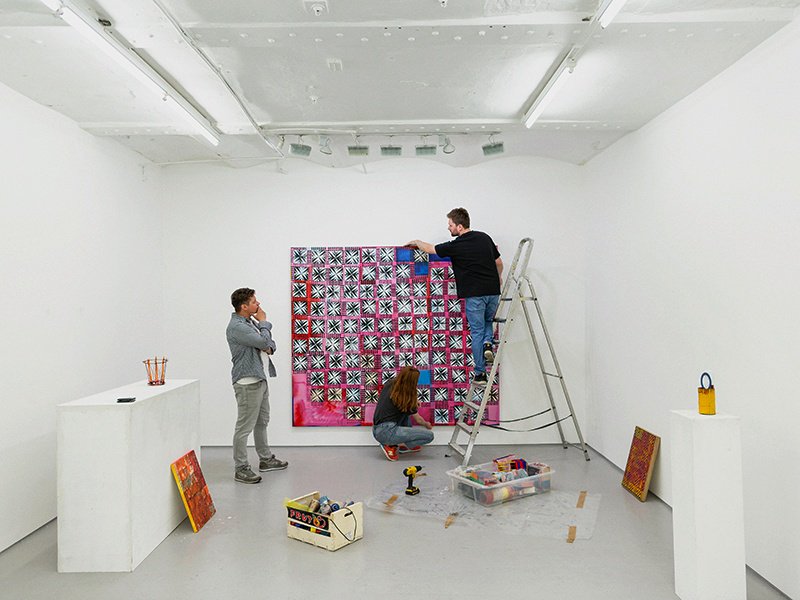
Kim Savage, owner and director of FOLD, also spent a long time working on the Beattie show, called Sweet. “We knew early in 2017 that Dominic would have a show this year. I finalized 2018’s calendar last summer,” says the gallerist, who represents the work of some 11 artists in his space in London’s West End, and at art fairs around the world.
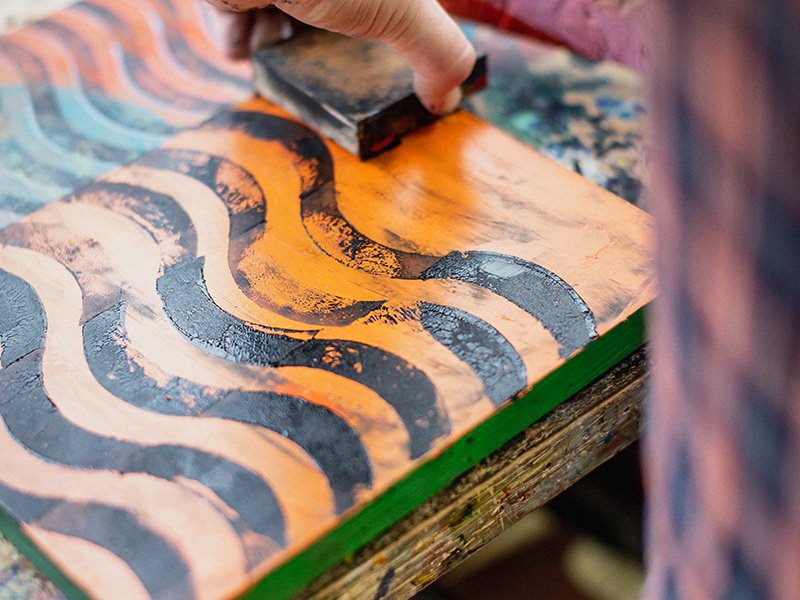
FOLD opened in 2015, when Savage wanted to relocate a previous venture from east to central London, becoming more commercial at the same time. The name was chosen to represent “bringing people together, bringing them into the fold.” Savage chose his new address because, “as a younger gallery trying to get the right clients along it definitely helps to be central—collectors might be flying in and have busy schedules, so you have to make it easy for them to visit.”
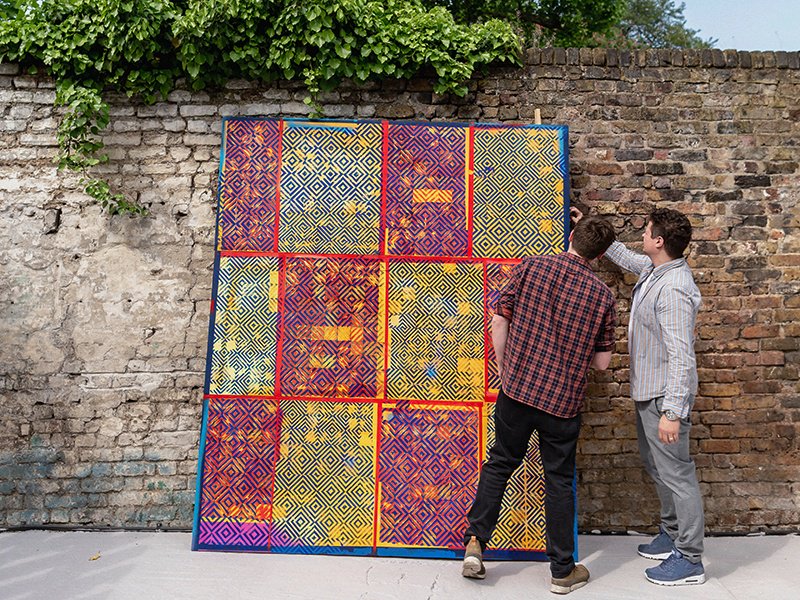
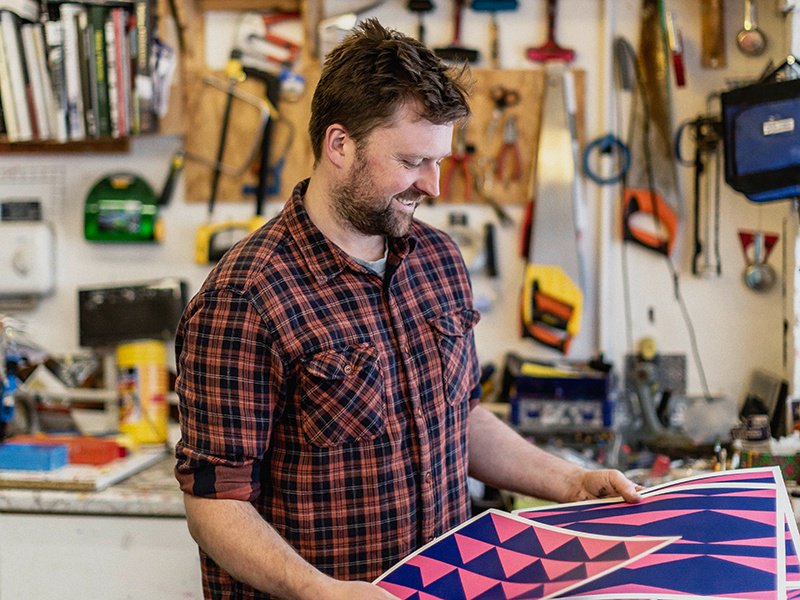
Savage cites keeping everything fresh and contemporary as being some of the challenges he faces, as well as spending too much time on planes visiting art fairs, and, of course, the bottom line: “Finances can be a headache,” he confesses. Freelance creative producer Bakul Patki adds to this list. “You need to keep the artist happy, to make the client happy, if there is one, and you need to not kill anyone if it’s something large scale.”
I love that I get the chance, every six weeks, to change the space and bring in something new
Patki has organized many site-specific, large-scale works, often in public spaces—hence her quip about not committing artistic homicide. She has helped illuminate London’s Piccadilly Circus with color to investigate synesthesia, and recently worked with Brooklyn-based artist Duke Riley on a piece that resulted in 1,500 LED-lit pigeons taking to the skies over the River Thames. She agrees with Savage that funding can be an issue—“It’s always a bit of a juggle and a struggle”—and is lucky to have good relationships with “brands and organizations that are interested in supporting culture.”
5. Spread the word
Of course, staging an exhibition is one thing, getting people to see it is another. “I learned very early on that you can put all your energy and budget into putting on a great show, but then it can very easily come and go without anyone knowing about or seeing it,” Patki observes. “‘Build it and they will come’ just isn’t true. They won’t come if they don’t know about it.” To this end she also helps with the public relations and marketing on the shows she curates.
To ensure they absolutely do know about what is happening at FOLD, Savage meticulously manages his database of contacts, inviting them to previews, a private view “for the artist and friends,” and in the case of select clients, to drinks or dinners with the artist so they can see the works ahead of the public.
The viewing of the work is one of many stages that Emily Sarokin, AVP Head of Gallery Operation, Christie’s New York, also has to manage. Like Savage, Sarokin and her team have long lead times. “We begin our year by mapping out a sales calendar. We have so many sales and exhibitions we have to play a Tetris-like game to work out how they will all slot in.”
6. Put your team together
Sarokin, who worked on Christie’s 2011 Elizabeth Taylor sale and the recent record-breaking Collection of Peggy and David Rockefeller, will then work with Christie’s teams processing materials, photographing them for catalogues, and preparing condition reports, as well as organizing the physical layout of a show.
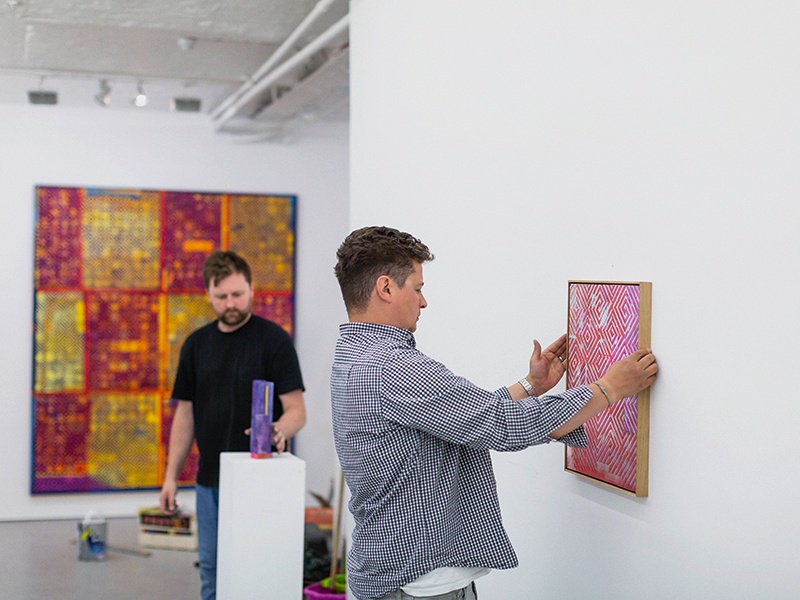
“Some exhibition designs take into account that the objects on display have been lived with and will be again, so it’s important that people can really experience them close up,” says Sarokin. “Others are staged like a museum, where visitors just savor the works on the wall. This is especially true of very valuable or fragile works.”
The lead-up to a show is a chance for the artist to experiment in the studio and try new ideas and new materials
Sarokin estimates that each of the exhibitions she works on will involve between 80 and 100 people, from the proposal team that secures a collection to the auctioneer who sells it, and of course, the teams who actually install the works for show.
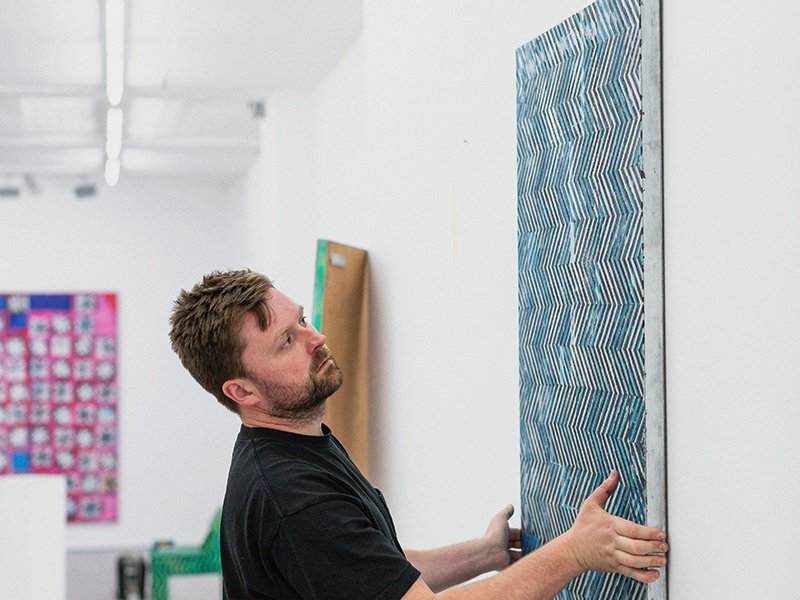
At New York’s Brooklyn Museum, Matthew Yokobosky, senior curator of fashion and material culture, tops this: “The museum has 300 people on staff and I would say that every person worked on the [recent] David Bowie is show in some capacity or other.” For the New York leg of the Bowie exhibit, Yokobosky oversaw the 400 pieces that had already been seen around the globe, along with an additional 100 pieces unique to New York. He has been at Brooklyn Museum for 19 years, and it’s his job to “have a concept for an exhibition and then find the story about that idea.”
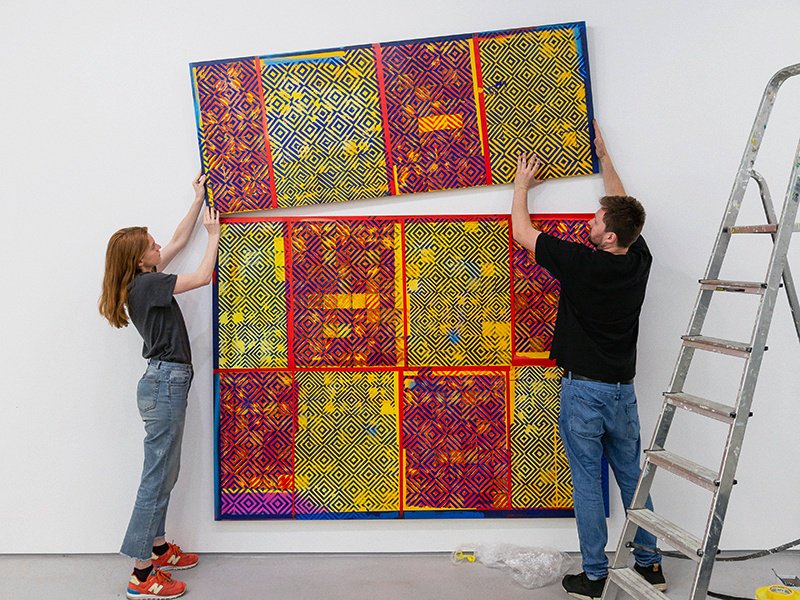
This often means dealing with 50 or 60 different lenders, he says. “Finding all those pieces, checking to make sure they’re great, doing all the paperwork and getting the work here is a long, complicated process.”
7. Know your space
Because Savage works with his own artists, getting the work to the gallery is a more straightforward affair. Once the exhibits are on site, the hanging of a show is very much a collaboration between gallerist and artist.
“I like to get to know a gallery space, its dimensions,” says Beattie. “When the show is laid out in my preferred configuration, Kim and I will discuss and make any necessary edits. We usually leave it overnight and come back the next day with fresh eyes. Hopefully you’ve got it right first time. Presenting work well is a craft in itself and it takes a long time to learn.”
8. Collaborate with the artist
“It’s important not to overhang, to have space in the gallery, to give visitors the chance to pause, to give the show rhythm,” says Savage. Prior to the works being finished and delivered, Savage will make several studio visits to see how the artist is progressing. For the gallerist, this is a vital part of any exhibition. “You’ve got to keep abreast of what’s going on for the artist—the lead-up to a show is a chance for them to experiment in the studio and try new ideas and new materials,” he notes.
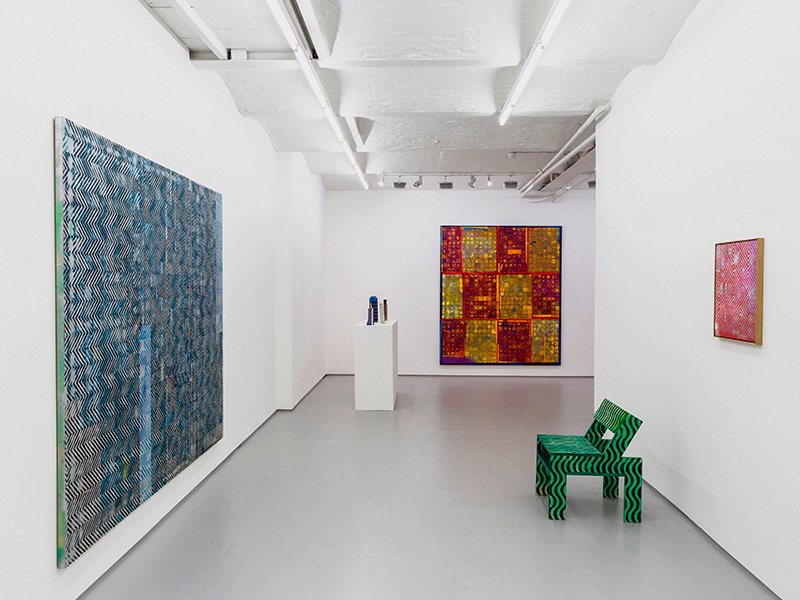
These visits also provide an opportunity for the artist and Savage to engage in a “conversation about ambition and developing the work while keeping an eye on how we’re going to market it.” Because of course, sellability is tantamount. Without those red dots on works no gallery can survive. “A good review is always nice,” says Savage. “And the week of the opening is exciting because there’s a buzz. But it isn’t until you’ve made some good sales, and know the show has paid for itself, that the pressure is off a bit.”